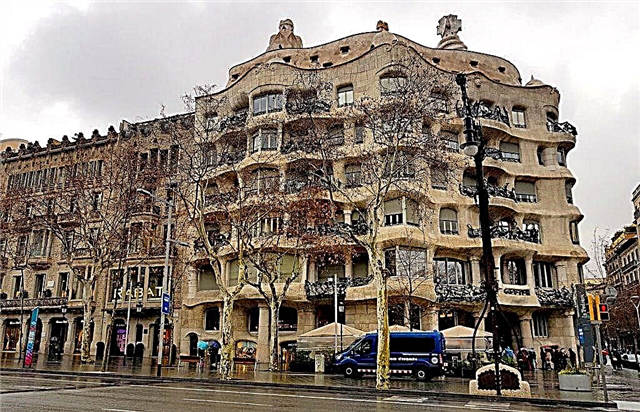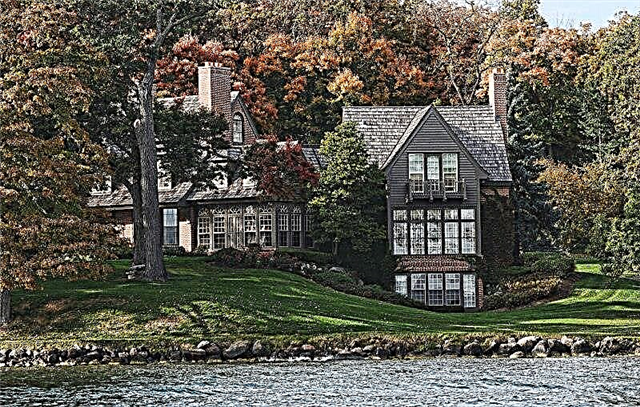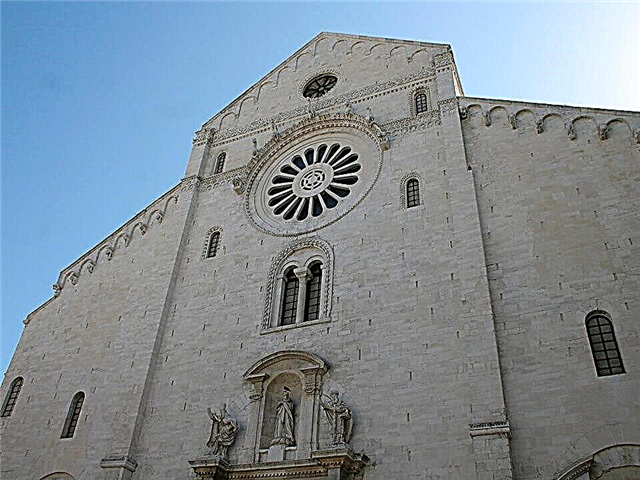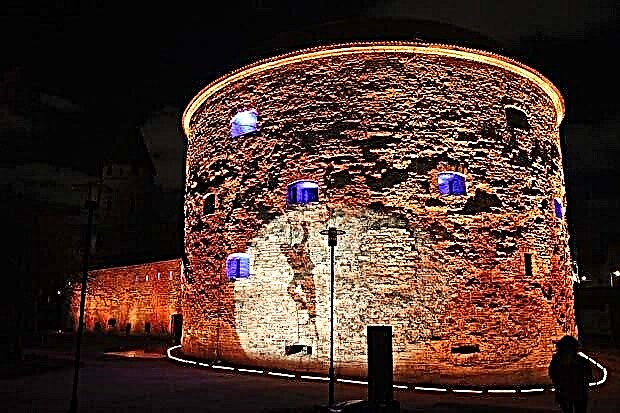Near the monastery, on the banks of the small river Konchura, there is one of the most mysterious buildings of the Trinity-Sergius Lavra - the Pyatnitsky well chapel. It was rarely included in the inventories that the monastery regularly made, and researchers ignored it. A remarkably executed cult building welcomes all guests of Sergiev Posad, going to the Lavra from the side of the railway station. Every day, many people strive to get inside this chapel in order to draw water from the holy spring.
The history of the chapel Pyatnitsky well
According to rare surviving information, the first chapel was built in the 20s of the 17th century over a spring that Sergius of Radonezh himself once found here. It was erected from white stone and covered with a tent of tesa. It is known that holy water was collected from the spring in 1667 at the request of Tsar Alexei Mikhailovich.

The new, round chapel building was built in the late 17th - early 18th centuries. The building was ordered by the wealthy Russian industrialist Grigory Dmitrievich Stroganov. Unfortunately, no precise information about the time of the beginning and the end of construction has been preserved. Researchers put only approximate dates - from 1675 to 1725. Stroganov buildings from Moscow or Naryshkin baroque were distinguished by great attention to detail and high quality of work.
In 1860, the chapel was partially altered - interfloor floors were made and part of the window openings were laid.
In the Soviet years, restorers spent a lot of effort for the high-quality restoration of this architectural monument of the 17th-18th centuries. The plan for such works was developed by the architect V.I. Baldin. The first restoration of the chapel was carried out in 1962, and the second one - 9 years later. After the work carried out, the chapel took on its original appearance. It was covered, as in the old, with an aspen ploughshare, and the columns of a large order were also recreated.

In addition, the restorers have restored the picturesque Baroque chapel fence with a balustrade and columns decorated with balls. However, due to ordinary domestic vandalism, the wonderful fence was broken in 1998. And for many more years its fragments lay around the chapel. Now we can only regret this, because the fence, according to its design, was an excellent addition to the architectural composition of an unusual building.
The chapel was consecrated in July 1997. An image of Paraskeva Pyatnitsa was placed above the entrance to it. Since that time, all comers have the opportunity to freely access the holy source. And in the spring of 2014, regular restoration work was carried out, and this architectural monument changed its roof to a new one.

Architecture and interior decoration of the chapel Pyatnitsky well
The chapel is a tiered centric building. It is built very carefully and with great precision in the execution of individual, even the smallest details. This is due to the fact that Stroganov was fond of architecture and always bought architectural reference books and manuals published in Europe. He very carefully monitored that all the technologies of the construction work performed were accurately executed according to European standards. Another monument of the Stroganov Baroque is the Gate Church of John the Baptist located in the Lavra. In addition to the buildings of the Stroganov architecture, several monuments of the Naryshkin Baroque of that time have also survived in Sergiev Posad. For example, the Nadladeznaya chapel near the Assumption Cathedral of the Lavra. However, the latter, although they copy European samples, do it superficially, not observing exact proportions and not paying special attention to the quality of execution of individual parts: columns, capitals, cornices and cartouches.

The bottom of the chapel is an octahedral rotunda with additional columns at the corners. It ends with two luminous octahedral superstructures decreasing in size. And the dome of the whole building is crowned with a patterned cross, which is an exact copy of the cross of the Nadladezny chapel in the Lavra.
Interestingly, the interior of the chapel visually appears to be very spacious. Although the base diameter is only 6 m.

The decor of the building is striking in the quality of workmanship. Beautiful platbands and portals faithfully copy the best examples known in Europe as the style of German Mannerism. A work of this quality could only be done by very skillful craftsmen, probably specially invited from abroad. The bottom of the edges and window openings are decorated with elegant rich stucco molding, with clearly traced details. The portal framing the entrance to the chapel is decorated with columns and an icon case. And the design of the upper tiers is identical to the decor of the upper part of the Utochia Tower of the Trinity-Sergius Lavra.
Inside the chapel there is a spring in the form of a round low well. On the walls and vaults of the building, you can see the picturesque paintings made in the late 19th - early 20th centuries. And the window openings are filled with cubic lattices.

The chapel vividly complements the architectural ensemble of the Trinity-Sergius Lavra. It looks especially good on fine days, when the wooden multi-layer roofing picturesquely contrasts with the snow-white walls of the building.
Since 1995, the chapel has had the status of a federal cultural heritage site. It is considered one of the finest examples of architecture of Peter the Great's time, in which the motives of the best traditions of European architecture are clearly traced.
The current state of the chapel and the mode of visiting

Today the chapel has been restored. It belongs to the Pyatnitsky courtyard of the Trinity-Sergius Lavra. By the origin of the source, this temple is often called the Sergius Chapel in everyday life. A cross is installed inside it, from which two streams flow down. They usually have two lines to collect holy water. The same cross, only larger in size, is installed outside the building, opposite the chapel. The area around has recently been landscaped into a cozy green park. You can get inside every day from 9.00 to 17.00. There is an icon shop where you can also buy utensils for a set of water.
How to get to the chapel Pyatnitsky well

The chapel is located in the historical center of the city of Sergiev Posad at 130 Red Army Avenue. From the railway station and the bus station located near it, you first need to go down to the Red Army Avenue, and walk along it to the chapel. This path is not long and is about 1 km.
If from Moscow to get to Sergiev Posad by car, then you need to go through the city along the Moscow highway and Red Army Avenue. The chapel is located to the right (from the east) of the Red Army Avenue, opposite Pyatnitskaya and Vvedenskaya churches.
Attraction rating:











